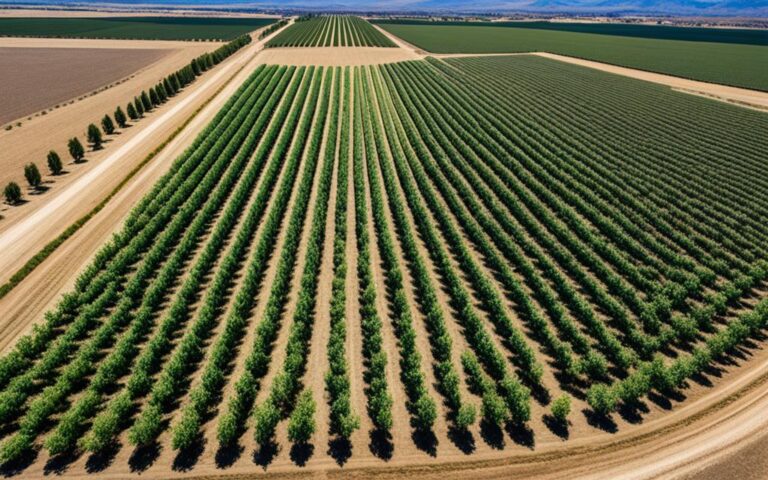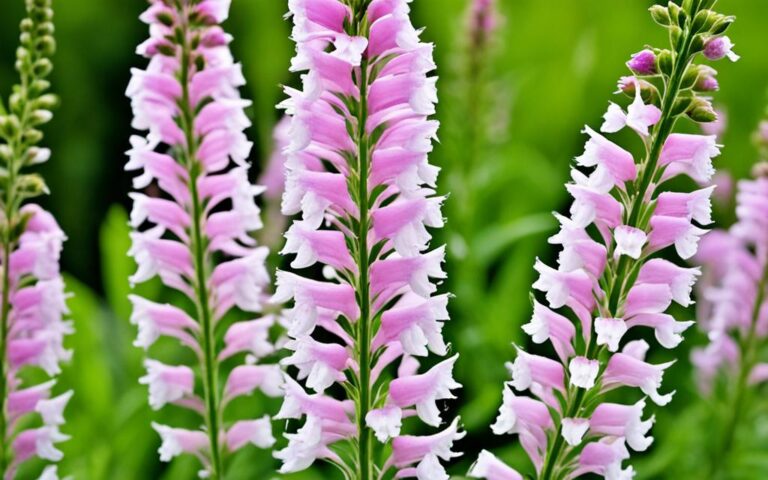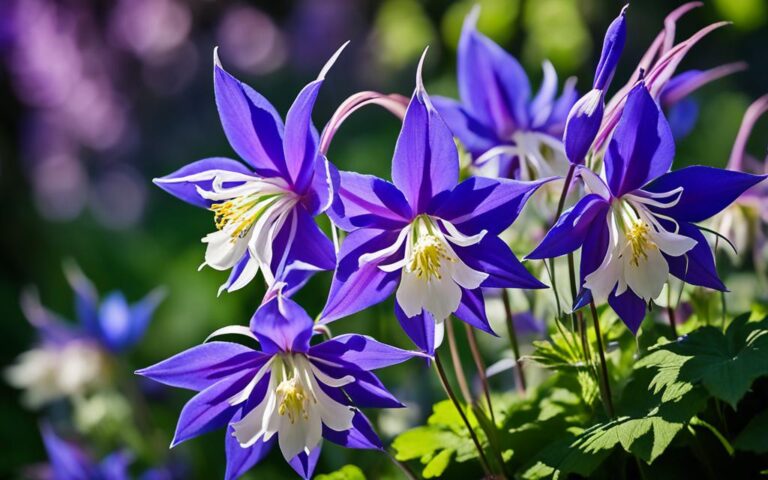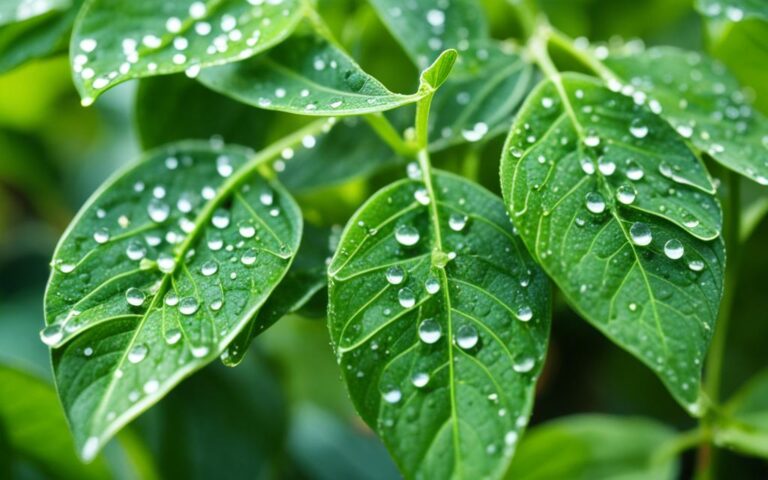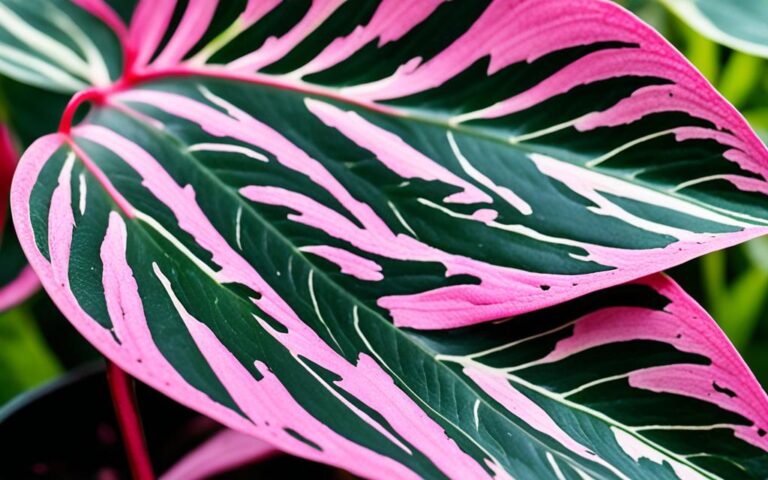Attract Hummingbirds: Best Plants for Your Garden
Hummingbirds are a joy to watch in any garden. There are over 300 species of these tiny, colorful birds in the Americas. To draw them to your garden, pick the right plants that offer lots of nectar. Adding plants that hummingbirds like will make your garden a lively spot for these birds to visit year-round.
Key Takeaways
- Hummingbirds are attracted to tubular, brightly colored flowers that are rich in nectar
- Planting a variety of perennials, annuals, flowering shrubs, and vines can create a hummingbird-friendly garden
- Native plants are an excellent choice for attracting local hummingbird species
- Providing a consistent source of nectar throughout the growing season is key to keeping hummingbirds coming back
- Incorporating water features like feeders or birdbaths can further enhance the appeal of your hummingbird garden
Introduction to Hummingbird-Friendly Plants
Attracting hummingbirds to your garden is a fun experience. The key is choosing the right plants. These birds love flowers with tubular shapes, bright colors, and lots of nectar. Their long beaks fit perfectly into these flowers.
What Makes a Plant Attractive to Hummingbirds?
Hummingbirds go for flowers in red, orange, and pink because they’re bright and signal lots of nectar. They also like flowers with tubular shapes. This shape lets them easily get to the nectar inside.
The Benefits of Creating a Hummingbird-Friendly Garden
Having hummingbirds in your garden is great for more than just watching them. They help pollinate plants as they move from flower to flower. They also eat small insects and spiders, which helps control pests. Plus, it’s fun to watch their amazing behaviors and tricks.
“To create a special hummingbird garden, one can follow variations on Grow Native!’s Hummingbird Haven.”
By picking the right plants, you can enjoy the benefits of hummingbirds. You’ll also make your garden healthier and prettier.
Perennials for Attracting Hummingbirds
Creating a garden for hummingbirds means using perennials. These plants live for many years and provide nectar and colors that hummingbirds love. Let’s look at three perennials that will draw these birds to your garden.
Bee Balm (Monarda)
Bee balm, or Monarda, is a favorite of hummingbirds. Its flowers are full of nectar and come in red, pink, and purple. They bloom from mid-summer to fall, giving hummingbirds a steady food source.
The plant grows upright and has leaves like clover. This adds beauty to your garden.
Penstemon (Beardtongue)
Penstemon, or beardtongue, is great for hummingbirds too. Its flowers are shaped like trumpets and come in red, pink, purple, and blue. They’re full of nectar and easy for hummingbirds to reach.
Penstemon blooms from late spring to summer. This means hummingbirds have food all through the season.
Salvia (Sage)
Salvia, or sage, is another plant hummingbirds love. Its flowers are in red, purple, and blue and are full of nectar. Salvia blooms from spring to fall, offering a steady food supply.
Choosing bee balm, penstemon, or salvia will make your garden a hummingbird paradise. Planting these flowers will create a beautiful place for these birds to visit.
Annuals that Hummingbirds Love
Many annual flowers are perfect for hummingbirds. Impatiens shine with their bright red, pink, and purple flowers. Petunias have trumpet-shaped blooms that hummingbirds love. Fuchsias are great too, with their hanging flowers.
These plants offer lots of nectar and come in many colors and shapes. They help create beautiful gardens that hummingbirds enjoy.
Here are some other annuals that attract annual flowers for hummingbirds:
- Calibrachoa plants grow about 8 inches tall and spread out, perfect for containers.
- Cleome plants have tall stems with pink, purple, or white flowers that hummingbirds like.
- Flowering Tobacco can be 10 inches to 5 feet tall, with star-shaped flowers in many colors.
- Nasturtium adds bright colors all season and is easy to care for.
- Mexican Sunflower grows up to 6 feet, has orange and red flowers, and attracts many insects.
- Lantana has lots of tiny flowers that attract hummingbirds and butterflies, especially in warm climates.
- Zinnias come in many colors, grow fast, and are loved by hummingbirds and butterflies.
Adding these annual flowers for hummingbirds to your garden makes a haven for them.
Flowering Shrubs for Hummingbird Gardens
For gardeners wanting to draw hummingbirds, adding flowering shrubs is a great idea. The butterfly bush (Buddleia) and the rose of Sharon (Hibiscus syriacus) are top picks. They’re sure to catch the eye of these tiny birds.
Butterfly Bush (Buddleia)
The butterfly bush, or Buddleia, is a favorite among hummingbirds. It has long, fragrant flowers in purple, pink, and white. These flowers are full of nectar, which hummingbirds love.
This shrub grows quickly and blooms from summer to fall. It’s perfect for a garden that welcomes hummingbirds. It also attracts butterflies, making your garden a hub for pollinators.
Rose of Sharon (Hibiscus syriacus)
The rose of Sharon, or Hibiscus syriacus, is another hit with hummingbirds. It blooms late and has big, colorful flowers full of nectar. These flowers come in pink, purple, lavender, and white.
This shrub grows upright and is great for borders or as a garden centerpiece. It can get quite tall but can be pruned to stay smaller. It loves full sun and can grow in many types of soil, making it ideal for hummingbirds.
“Hummingbirds primarily feed on nectar, with trumpet-shaped flowers containing red or purple blooms being the most attractive to them.”
Adding these colorful shrubs to your garden will make it a haven for hummingbirds. They’ll love the nectar-rich flowers all season long.
Vines and Climbers to Attract Hummingbirds
Vines and climbing plants are great for drawing hummingbirds to your garden. They add beauty and offer nectar-rich blooms. These plants create paths and spots that hummingbirds love.
Trumpet Vine (Campsis radicans)
The trumpet vine, or Campsis radicans, is a favorite among hummingbirds. Its big, orange and red flowers are full of nectar. This vine can grow up to 40 feet long, perfect for covering arbors or fences.
It’s a bit strong and may need pruning. But, it’s worth it for the hummingbirds it attracts.
Honeysuckle Vine (Lonicera)
Honeysuckle vines are great for hummingbirds too. They have flowers in red, orange, and yellow that are full of nectar. These vines can grow up trellises or fences, making your garden look beautiful.
Some honeysuckles can spread too much, but there are tamer types for gardens.
When picking vines for your garden, think about when they bloom and how they grow. Mixing different vines can make your garden a paradise for hummingbirds.
Native Plants for Hummingbirds
Native plants are key to drawing hummingbirds to your garden. These hummingbird plants grow where the birds do, offering the perfect food and shelter. Adding native plants for hummingbirds to your garden brings joy and helps the local ecosystem.
Some top native plants for hummingbirds are:
- Bee Balm (Monarda) – A member of the mint family, bee balm thrives in sunny locations and offers vibrant red, pink, or purple flowers that hummingbirds adore.
- Columbine (Aquilegia) – These delicate, bell-shaped flowers come in a range of colors and provide a reliable nectar source for hummingbirds.
- Salvia (Salvia) – Various species of salvia, native to different regions, offer an abundance of tubular, nectar-rich blooms that hummingbirds find irresistible.
These native plants for hummingbirds are perfect for your area’s climate and soil. They’re a smart choice for a garden that attracts hummingbirds. By using these and other hummingbird plants, you’ll create a beautiful spot for these birds.
| Plant | Regular Price | Sale Price |
|---|---|---|
| Big Leaf Maple | $34.95 | $34.95 |
| Blue-eyed Grass | $4.49 | $4.49 |
| Broadleaf Lupine (Seeds) | $4.49 | $4.49 |
| Meadow Checkermallow | $4.49 | $4.49 |
| Nodding Onion | $4.49 | $4.49 |
| Rydberg’s Penstemon | $4.49 | $4.49 |
| Pacific Madrone | $34.95 | $34.95 |
| Ponderosa Pine | $34.95 | $34.95 |
Hummingbird Plants for Hanging Baskets
Hummingbirds visit hanging baskets and container gardens too. Adding plants that attract hummingbirds to your outdoor spaces helps these tiny pollinators. You can make your hanging baskets a hit with hummingbirds.
For hanging baskets, annuals like fuchsias, petunias, and impatiens are great picks. They offer nectar-rich blooms that hummingbirds love. Vines like honeysuckle or trumpet vine can climb up supports, making your garden look stunning.
Hummingbirds see more colors than we do, so a mix of flowers in your baskets will attract them. Your baskets should be at least 12 inches wide. A 12-inch container can hold about five to seven plants.
- Petunias: Inexpensive, come in various colors, and are ideal as a border plant in hanging baskets.
- Impatiens: A favorite of hummingbirds, come in many colors, including bright red, and thrive in shade or partial sun.
- Fuchsias: Provide a continuous source of nectar-rich blooms that hummingbirds can easily access.
- Honeysuckle and Trumpet Vine: Trailing vines that can be grown in containers and trained to climb, creating a visually striking display.
Choose plants for your hanging baskets that need the same water and light. Use a lightweight potting mix with peat moss and perlite or vermiculite. Place your baskets in a sunny spot or shade, depending on the plants.
“Hummingbirds are attracted to a variety of flowers and foliage that work well in hanging baskets such as petunias, geraniums, ivy geraniums, bidens, lantana, cupheas, fuchsias, nasturtiums, cigar plant, coral bells, lobelia, salvia, verbena, zinnia, garden phlox, veronica, and penstemon.”
Nectar-Rich Hummingbird Plants
Hummingbirds love nectar-rich flowers that help them stay energized. They’re especially drawn to high-nectar plants with various shapes, sizes, and colors. This includes red trumpet-shaped flowers on bee balm, penstemon, and fuchsias, as well as bright ones like salvia, lantana, and columbine.
Here are some top picks for attracting hummingbirds:
- Aloe spp. (Zones 9 to 11) – These plants have colorful flowers that hummingbirds adore.
- Bellflowers – They’re great for hot spots and can grow in partial shade.
- Bugleweed (Ajuga reptans, Zones 3 to 9) – Prefers shade, spreads out, and attracts hummingbirds and butterflies.
- Cleome (Cleome hassleriana) – This annual spreads easily and brings in butterflies.
- Dahlias (Zones 8 to 11 or Annual) – Perfect for late summer, these plants are a hit with hummingbirds.
Choosing these nectar-rich flowers for hummingbirds means your garden will be a go-to spot for these birds all season.
| Plant Name | USDA Growing Zones | Key Attributes |
|---|---|---|
| Fuchsia | Annual to Zone 9 | These plants are perfect for partial shade and attract hummingbirds. |
| Indian Pink (Spigelia marilandica) | Zones 4 to 8 | They bloom in late spring and early summer, drawing hummingbirds to shade. |
| Mexican Bush Sage (Salvia leucantha) | Annual to Zone 8 | Flowers from late fall to early summer, offering a food source for hummingbirds. |
| Rose Campion (Lychnis coronaria) | Zones 4 to 8 | This drought-tolerant plant attracts hummingbirds and butterflies. |
| Spanish Flag (Ipomoea lobata) | Zones 10 to 11 or Annual | A climbing vine that draws hummingbirds, best in full sun. |
| Tall Verbena (Verbena bonariensis) | Zones 7 to 11 or Annual | It draws butterflies, hummingbirds, and goldfinches, liking sun and moist soil. |
Adding a mix of nectar-rich flowers for hummingbirds to your garden makes it a lively spot for these birds. It ensures they have a steady food supply all season.
Designing a Hummingbird Garden
Creating a hummingbird garden is all about the right spot and design. These birds love gardens full of nectar-rich plants, water, and places to rest. They enjoy watching the world from a perch.
Choosing the Right Location
Hummingbirds love gardens in the sun because many plants they like grow best there. Adding tall plants like shrubs or trees gives them places to hide and nest. Having your garden near a window lets you watch their amazing flying skills.
Planting in Masses
- Putting many of the same plants together is a great way to attract hummingbirds.
- This makes it easy for them to find food in your garden.
- It also makes your garden look beautiful and keeps nectar available all season.
Think about where and how you plant your hummingbird garden to make it a hit with these birds. Use lots of plants that give nectar, make sure it gets enough sun and water. And don’t forget the power of planting in groups to make it a true hummingbird paradise.
Hummingbird Plants for Different Regions
Creating a hummingbird-friendly garden means choosing the right plants for your area. In the Southeast, plants like lantana, salvias, and trumpet vines work well because they handle heat and drought. For the Pacific Northwest, columbine and bee balm are great choices because they’re native and full of nectar.
It’s important to pick regional hummingbird plants and hummingbird-friendly plants by climate that fit your garden’s conditions. This ensures your garden will attract hummingbirds and stay healthy. By choosing the right plants, you’ll make a space that’s perfect for both you and the hummingbirds.
Here are some examples of hummingbird-friendly plants for different regions:
- Northeastern United States: Eastern Columbine, Swamp Milkweed, Purple Milkweed, Kentucky Coffeetree, Cardinal Flower, American Fly Honeysuckle, Trumpet Honeysuckle
- Southeastern United States: Bee Balm, Salvia, Trumpet Vine, Lantana
- Pacific Northwest: Columbine, Bee Balm, Penstemon, Fuchsia
- Southwestern United States: Agastache, Salvia, Yucca, Aloe Vera
Choosing the right regional hummingbird plants and hummingbird-friendly plants by climate makes your garden a great place for hummingbirds. They’ll find everything they need to live and thrive.
“Hummingbirds are the jewels of the garden, and by planting the right flowers, you can turn your outdoor space into a hummingbird haven.”
Caring for Hummingbird Plants
Looking after a hummingbird garden takes some effort, but it’s worth it. You need to water, fertilize, prune, and deadhead your plants. These steps help keep your garden healthy and full of flowers for hummingbirds.
Watering and Fertilizing
Hummingbird plants love moist, well-drained soil. Make sure to water them often, especially when it’s hot and dry. This keeps them healthy and full of flowers.
Also, give your plants a slow-release fertilizer. It helps them grow strong and bloom more.
Pruning and Deadheading
Pruning and deadheading are key for hummingbird plants. Remove dead flowers to make the plant focus on new blooms. This means more food for hummingbirds.
Trimming plants back keeps them neat and in shape. It stops them from getting too big and messy.
With these simple steps, your hummingbird plants will stay beautiful and full of life. This makes your garden a great place for these amazing birds to visit.
“Proper care and maintenance is essential for ensuring the long-term health and viability of your hummingbird plants.”
Attracting Hummingbirds with Water Features
Hummingbirds love the bright colors and sweet nectar of flowers. But they also can’t resist water. Adding water features for hummingbirds to your garden makes a perfect spot for them.
Hummingbirds enjoy moving water and its sounds. So, think about putting in a misting system or a birdbath with a gentle flow. Place these near hummingbird-friendly plants to make them easy to find.
- Shallow birdbaths or saucers filled with clean, fresh water
- Dripping faucets or misting systems that create a soothing, continuous water flow
- Placing water features near your hummingbird-attracting plants for maximum visibility and accessibility
Combining nectar-rich plants with water makes a great hummingbird oasis. This mix will draw and keep these amazing birds around. You’ll get to see their amazing flying and hear their sweet songs all season.
Hummingbird Plants for Shade Gardens
Many hummingbird plants love full sun, but there are great options for shady spots too. Impatiens, fuchsias, and columbine are top picks for shade. The Columbia Lily (Lilium columbianum) is perfect for Zones 5 to 9 and draws hummingbirds with its bright colors.
The Cardinal Flower (Lobelia cardinalis) does well in Zones 3 to 9 and needs hummingbirds to spread its pollen. It has a special flower shape that hummingbirds find irresistible.
The Bleeding Heart (Lamprocapnos spectabilis) loves cool, moist spots in Zones 3 to 9. It blooms all season with heart-shaped flowers. Ginger Lilies (Hedychium spp.) prefer Zones 8 to 11 and need moist soil. They have fragrant flowers that hummingbirds love.
The Red Buckeye (Aesculus pavia) is great for Zones 4 to 8. It has big clusters of red flowers that hummingbirds can’t resist.
Weigela plants (Weigela spp.) are spring bloomers in Zones 4 to 9 that attract hummingbirds. Coral Bells (Heuchera spp.) in Zones 3 to 9 have pretty leaves and small flowers that hummingbirds enjoy. Columbines (Aquilegia spp.) in Zones 3 to 8 have bell-shaped flowers full of nectar, making them a favorite spot for hummingbirds.


